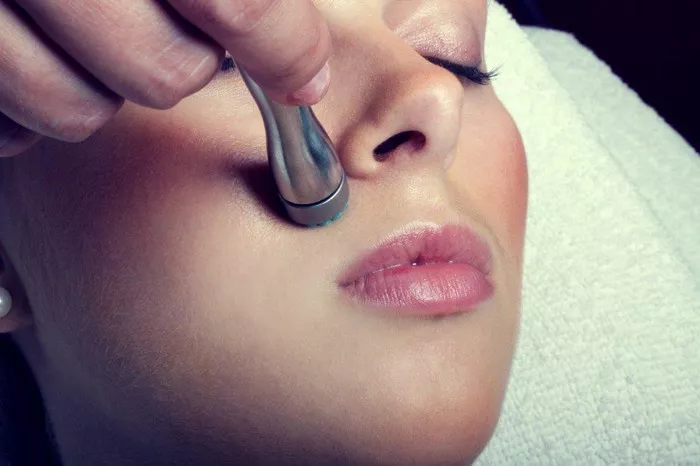Microdermabrasion has emerged as a popular non-invasive cosmetic procedure for achieving smoother, more youthful skin. This exfoliation technique involves the removal of dead skin cells, making way for fresher skin to surface. As with any medical procedure, concerns about potential side effects arise, one of which is the possibility of scarring. In this article, we delve into the question: Can microdermabrasion cause scarring? We explore the factors that contribute to scarring risk, the safety measures taken during the procedure, and how to minimize the likelihood of scarring.
Understanding Microdermabrasion
Microdermabrasion is a cosmetic procedure that aims to improve skin texture, tone, and appearance. It involves the use of a specialized device that exfoliates the outermost layer of the skin, removing dead cells and promoting cell turnover. The procedure can help reduce the appearance of fine lines, wrinkles, age spots, and mild acne scars. Microdermabrasion can be performed in a clinical setting by a trained skincare professional or dermatologist, and it is generally considered a low-risk treatment.
Can Microdermabrasion Cause Scarring?
Microdermabrasion is designed to be a gentle exfoliation technique that should not cause scarring when performed correctly by a qualified professional. The procedure involves the use of either crystal-based or diamond-tip devices, which abrade the skin’s surface to remove dead cells. While the process does induce controlled trauma to the skin to promote regeneration, the level of trauma is significantly lower compared to more aggressive treatments like laser resurfacing or chemical peels.
Factors Contributing to Scarring Risk
Although the risk of scarring from microdermabrasion is minimal, certain factors can increase the likelihood of adverse outcomes:
Aggressive Treatment: If the microdermabrasion procedure is performed too aggressively, with excessive pressure or multiple passes over the same area, it can lead to skin damage and potential scarring.
Unsuitable Candidates: Individuals with certain skin conditions, such as active acne, open wounds, or infections, may not be suitable candidates for microdermabrasion. Treating such conditions can increase the risk of complications and scarring.
Inadequate Post-Treatment Care: Failing to follow proper aftercare instructions, such as avoiding sun exposure and using recommended skincare products, can hinder the healing process and contribute to scarring.
Pre-existing Scarring: Individuals with a history of keloids or hypertrophic scars may have an increased risk of scarring after microdermabrasion, even though the risk remains relatively low.
Safety Measures During Microdermabrasion
Trained skincare professionals take several safety measures to minimize the risk of scarring during microdermabrasion:
Skin Assessment: A thorough evaluation of the patient’s skin type, condition, and medical history helps determine if microdermabrasion is appropriate and safe.
Adjustable Intensity: Most microdermabrasion devices allow the operator to adjust the level of suction and abrasion to suit the patient’s skin type and needs.
Professional Training: Skincare professionals who perform microdermabrasion undergo training to understand the proper techniques, pressures, and durations required for a safe and effective treatment.
Spot Testing: Prior to full treatment, a spot test may be conducted on a small area of the skin to assess the patient’s reaction and ensure no adverse effects occur.
Minimizing the Risk of Scarring
To reduce the risk of scarring after microdermabrasion, patients can take the following precautions:
Follow Aftercare Instructions: Adhere to the post-treatment guidelines provided by the skincare professional. This often includes avoiding sun exposure, using gentle skincare products, and applying sunscreen regularly.
Avoid Aggressive Skincare: In the days following microdermabrasion, avoid using harsh exfoliants, retinoids, and acids that can further irritate the skin.
Hydrate and Protect: Keep the treated area hydrated by using a gentle moisturizer. Additionally, use sunscreen with adequate sun protection to shield the skin from UV damage.
Patience: Allow the skin ample time to heal before resuming your regular skincare routine or considering additional treatments.
Conclusion
When performed by a skilled and experienced professional, microdermabrasion is generally considered a safe and low-risk procedure. While the risk of scarring is minimal, it’s essential to ensure that the procedure is administered with caution, adhering to the appropriate techniques and safety measures. As a patient, following post-treatment instructions and maintaining a healthy skincare routine are key factors in minimizing the risk of adverse outcomes. Overall, microdermabrasion can be a valuable tool for achieving smoother, more youthful skin with little to no risk of scarring.


